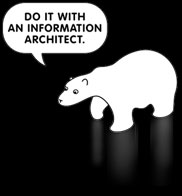Tools for Wireframes
Das hier ist ein wirklich sehr schöner Blog-Post: 10 Excellent Tools for Creating Web Design Wireframes.
When starting a new web design project, it’s always a good idea to begin with a wireframe. The purpose of a wireframe is to communicate the layout of a page without getting caught up in color and design elements. Wireframes can be a big time saver as they help all parties involved come to an agreement on placement of major page elements such as headers, content areas, navigation menus, and footers. The key is to get the layout nailed down so major layout changes won’t take place once detailed design elements are in place.
Sind natürlich viele bekannte Tools dabei, aber auch einige die viele noch nicht kennen dürften. Lohnt wirklich einen Blick.












